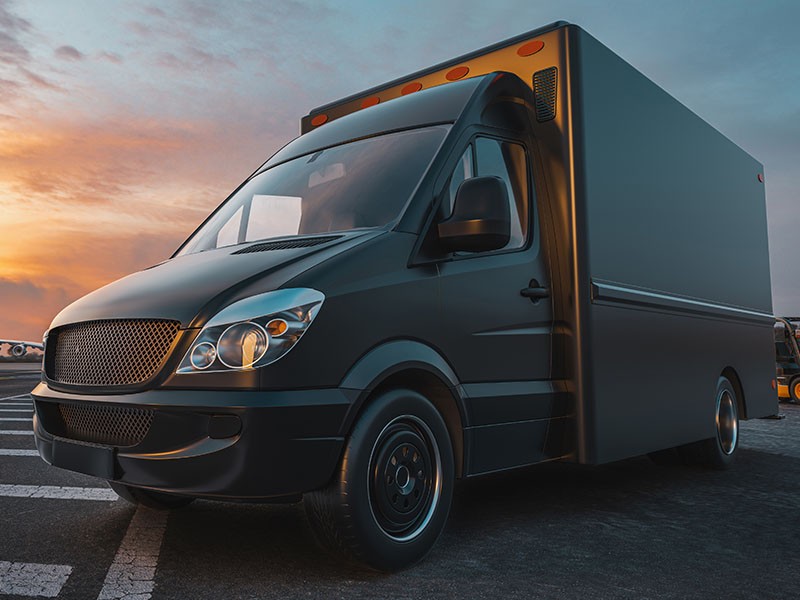What is Last-Mile Delivery and Role of Fleet Management Software in it?

The logistics industry is the backbone of world trade, ranking amongst the top revenue-generating businesses. According to an estimate, its total revenue was around 6.6 trillion $ in 2019 before COVID-19. With innovations like fleet management software, the productivity and profitability of this industry are bound to grow.
While talking about logistics and supply chain, we cannot forget last-mile delivery. It is an integral step in the delivery process and can make or break the reputation of a business. Let us discuss it and the role of the fleet management system in it.
What is Last-Mile Delivery?
It is the final step in the delivery process, including the parcel’s movement from the transportation hub to the final destination. It is considered the most crucial step of the whole process and decides the customer’s opinion.
The goal of every business is to take minimal time during transportation. If the customers get faster and hassle-free delivery, it creates a positive image of the business. It can result in growing demand and a sustainable relationship with the customers. Companies hire professionals and deploy high-tech software to enhance their last-mile delivery.
What are the different steps in the Last-Mile Delivery Process?
- Order is placed digitally
- The arrival of the order at the transportation hub
- Allocation of the parcel to the delivery personnel
- Scanning and testing of orders before transportation
- The arrival of the order at the final destination with the documented proof
How does Fleet Management Software help in Last-Mile Delivery?
Every company wants to develop a perfect mechanism to ensure quick and seamless last-mile delivery. However, it is easier said than done. It is essential to form a system that caters to every aspect of the process. Modern vehicle tracking solutions are a great help in this regard. Let us look at their role in detail.
1. Automation:
In the transportation business, time holds the key to success. The faster a package reaches its destination, the better the customer response. Therefore, a company has to adopt a mechanism that allows them to automate operations. Fleet management software takes over many tasks from the managers. From reporting to monitoring vehicles, they perform everything.
The vehicle tracking systems are pivotal in removing the paperwork from logistics operations. It saves the managers from dealing with piles of papers to find a record. With tracking software, they are a click away from performing this task. Thus a lot of time can be saved on last-mile delivery, resulting in customer satisfaction.
2. Route Optimization:
During transportation, the biggest nuisance for the driver is the obstacles on the path. It not only causes a delay in transport but also increases fuel expense. The route optimization feature of the vehicle tracking system provides a solution to this problem. It allows drivers to anticipate the hurdles on the road. By identifying the unclear paths timely, they can change directions, saving idling time.
The latest tracking software provides the traffic situation on the routes. With complete knowledge of traffic, drivers can take the shortest paths to the location. Thus, the parcel reaches the customer faster.
Read Also: How Flotilla IoT Fleet Management System Ensures Safety?
3. Real-time Monitoring:
Keeping a check on the driver’s performance is integral in ensuring faster last-mile delivery. For that purpose, the live monitoring feature of fleet management software comes in handy. Whether you want to check the real-time status or location of the vehicle, monitoring software offers everything. You can also monitor the idling time of the driver helping in better accountability.
With complete awareness of the current status, managers can make informed decisions. In case of any problem like vehicle breakdown, a quick replacement can save transportation time. The latest monitoring software also offers the eco-driving feature to check the safety level of the driving. It helps in preventing accidents, saving a lot of precious time and money.
4. Reporting:
A business should always identify the loopholes in its process. It is only possible through proper reporting of the operations. With the help of monitoring software, you can compile reports of all the deliveries with details like transportation time. Moreover, you can also create driver-based reports to check their performance. It helps keep the drivers at best, resulting in efficient last-mile delivery.
The insightful reporting allows the managers to gauge the efficiency of their transportation process. They can point out the weak areas and strategize to eradicate them. It helps in optimizing the operational mechanism, resulting in better service.
Keeping the importance of last-mile delivery in mind, companies are taking proactive measures to enhance their operational efficiency. The role of advanced fleet management software like Flotilla IoT is pivotal in this regard. With future innovations, the future of supply chain and logistics looks pretty bright.
Read More: How does GPS Tracking Software handle real-time tracking


